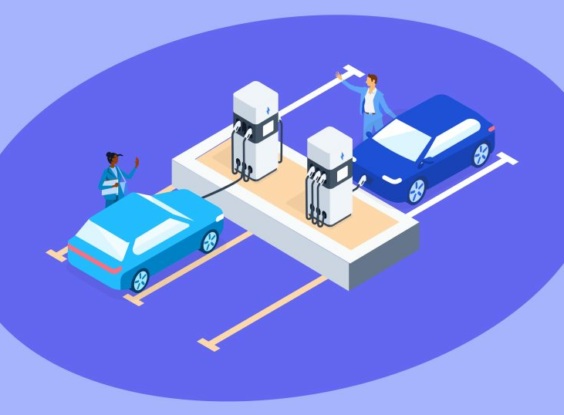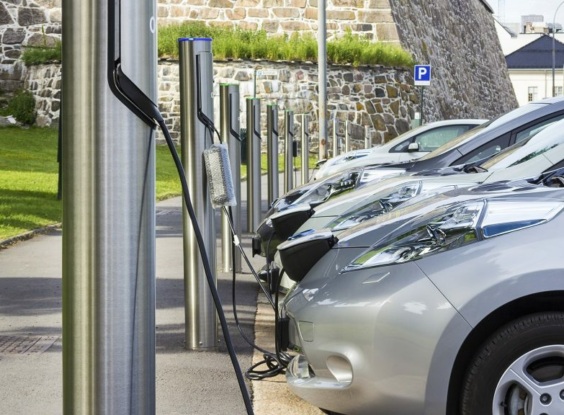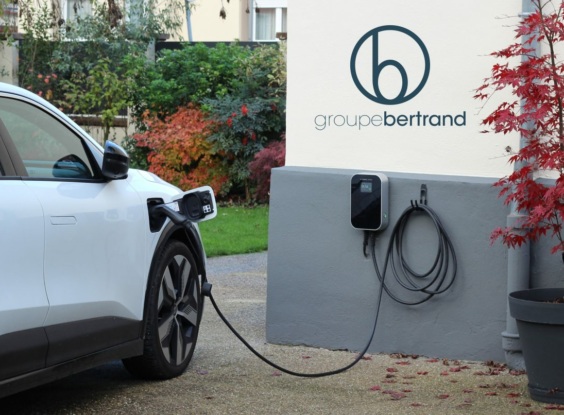
How to get to grips with your new company electric vehicle ?

Your employer has just put you behind the wheel of an electric car or commercial vehicle – and this is your first ever experience with EVs!? Don’t panic! We’ll help you adapt to your new vehicle so you pick up the best practices to get the most out of it.
2 pedals only
Unless you are already used to driving an automatic vehicle, you may be surprised that you only have 2 pedals – the brake and the accelerator.
Why? Firstly because the lack of engine noise makes it difficult to judge the best moment to change gear. And secondly, this manoeuvre is no longer required with a motor capable of generating 100% torque from start and over a large operating range with virtually linear acceleration up to speeds of 100-150 km/h – and even above for certain models.
What’s more, the absence of the clutch pedal relieves the left knee, which is usually subject to high stress during delivery rounds or when driving in slow traffic.
P, R, N, D…
The drive mode selector is another device you need to get your head around. It can look very different from one carmaker to another, starting with a conventional lever or a type of joystick to a more or less round switch panel on the dashboard or pivot stick behind the steering wheel.
The four main positions have been copied from the automatic gear boxes of vehicles powered by combustion engines: P (Park, to stop the vehicle before switching off the motor), R (Reverse), N (Neutral, to disengage the direction of the vehicle), D (Drive, to move forward).
…B, C and the paddles
Added to this, you may have a couple of other positions. B (Brake) gives you a more powerful brake than simply lifting your foot off the accelerator. And C (Comfort) highlights the free-wheeling effect.
These modes can also be managed more subtly via the set of paddles you can operate from the steering wheel, one for more regenerative power, and the other to reduce it. In any case, you will find what suits you best once you’re behind the wheel and can work out the best way of operating these devices designed to give you greater comfort of use and to maximise range.
Eco drive
As range extends on electric vehicles due to the technological progress achieved with batteries, it may seem that eco-driving is becoming less relevant. However, in certain cases (long-distance travel, winter, headwinds and motorway driving) it may be prudent, if not essential, to make sure you have that extra margin.
You will discover that in many situations, the difference between energy-consuming and regenerative driving boils down to a few km/h. The dashboard display will guide you as to when you should release the accelerator a little.
The gain in range for a single charge may be as much as a few dozen kilometres if you adopt a flexible, anticipatory method of driving, which gets the most out of regenerative braking. It is best to avoid motorways, or at least keep within a 110 km/h limit for long distances. Above this speed, aerodynamic drag will lead to excessive over-consumption.
Using energy-consuming devices correctly
Generally speaking, headlights, the radio and windscreen wipers consume a minimum amount of energy compared with aircon and heating. Fortunately, more and more EV models are using fewer energy-hungry devices and are recuperating calories that could be wasted due to running the motor and/or the thermal management of the battery.
Most EVs today offer a screen on the dashboard tablet giving the instantaneous consumption of the motor in real time, together with that of the aircon/heating unit and other electric devices. It is a good idea to consult the readings regularly to understand how your vehicle works. In any case, it is often preferable to use the heated steering wheel and seating when the model is fitted with these options.
Charging at home or at work
Electric cars and commercial vehicles sold in 2020 can be charged in three different ways.
Firstly at work or at home using the electric cable provided plugged into a standard domestic socket. In this case, a full charge may take more than 10 hours, and perhaps even a whole day with high-capacity packs.
On-board chargers – 7 or 11 kW – can halve this time, or even cut it by two-thirds, so that you can leave the next morning with your batteries fully charged. But, you need a wallbox for this. Most manufacturers offer packages including installation for private homes or collective buildings.
Public AC charging stations
The on-board device charges using alternative current. It can also be used with 22 kW fast-charging stations set up in public areas, which is usually what you find in France.
Depending on what you are using your EV for, it might be a good idea to plug in at difference times of the day, for example during coffee and lunch breaks or when you are in a meeting. One hour of connection is worth up to about 35 kilometres in range if the car or commercial vehicle has a 7 kW on-board charger. However, make sure you don’t monopolise public charging stations needlessly. Firstly, to let other EV user have access to them. And secondly, because a number of operators invoice post-charging connection time at a hefty rate.
Useful tip
As the use of electric vehicles expands, some rapid charging stations are very popular at certain times of the day, mainly on the T2 connector. Yet several of them are still fitted with a T3 connector which few EV drivers now use. It may therefore be a smart move to invest in a T3 charging cable that’s compatible with your particular model.
However, it is useful to know that when 2 vehicles are topping up at the same time, the charging power is often halved. In this case, it may not be worth your while to charge at this time.
Depending on your situation, other adapters may be useful – especially if you often travel and stay at hotels. An increasing number of hotels now offer Tesla-based charging stations that are open to other EVs. But you will need a T2 connector for your car. To use these facilities, it is often essential to have a T1/T2 adaptor with you.
Rapid DC charging stations
Most electric cars and commercial vehicles are equipped for (ultra)rapid (50-350 kW) charging with direct current. For this, you need a specific connector – usually a standard Combo CCS 2. Outside Tesla, it’s the most common connector in France and the fastest developing one as well. Some models, mostly Japanese, are still sold with a CHAdeMO connector.
Whatever the case, rapid charging means you can gain a range of just over 100 kilometres in less than one hour. Several hundred kilometres are clocked up in the same time laps with models designed to top up at very high power ratings.
Paying for charging
Whether you use fast AC (22 kW) or rapid DC charging stations, a number of payment options are available. Most charging points accept several methods. They go from free charging, with or without identification, to payment by card, but also opening up an account so that you can have an access badge, or entering a code received by smartphone on a reader located at the charging point.
As far as badges are concerned, rather than accumulating several (one for every regional network, for example), it is far more practical to go through a mobility operator that will give you access to most charging stations in your country and across Europe. The Chargemap Business offer also provides you with a single monthly invoice for all the charges carried out externally and associates the use of your EV with green practices.
Identification of the charging stations
Whether you often take the same route or venture out into new areas, checking out the available charging stations in advance is a good idea. Your electric car or commercial vehicle no doubt has an integrated map with the available charging points. However, it won’t be at all up to date.
In Europe, the ideal solution is to use the Chargemap app which gives you the best snapshot of network links, thanks to a very active community of users. In addition to providing the precise location of charging stations (with photos to boot) and a wealth of practical information (number of charging stations, connectors available, rates etc.), charging stations that are out of order can be identified through the comments left by members and you are rapidly informed when they are back in operation again.
Electric vehicle maintenance
Compared to vehicles with combustion engines, electric cars require very little maintenance. Generally speaking, except in the case of extensive usage, you only need to go to your local garage for a maintenance check once a year. You should not however, forget to do so. Firstly because it means your guarantee is upheld – especially for the batteries. The batteries are robust, but if they require replacement outside the guarantee, the bill will be hefty for the vehicle owner.
What’s more, the yearly check-up is often an opportunity to update the on-board software. In addition to updating the internal map of available charging stations, it means you benefit from new features and some malfunctions that you might not even have noticed can be rectified. You should note that if you only step on the brake pedal occasionally, you nonetheless do need to use it from time to time to prevent the system from seizing up.
We hope this article has helped you understand your electric vehicle better and given you some useful tips so you can get the best out of your EV experience. Drive safely!
Are you looking for a simple, trouble-free way of managing your EV fleet?
